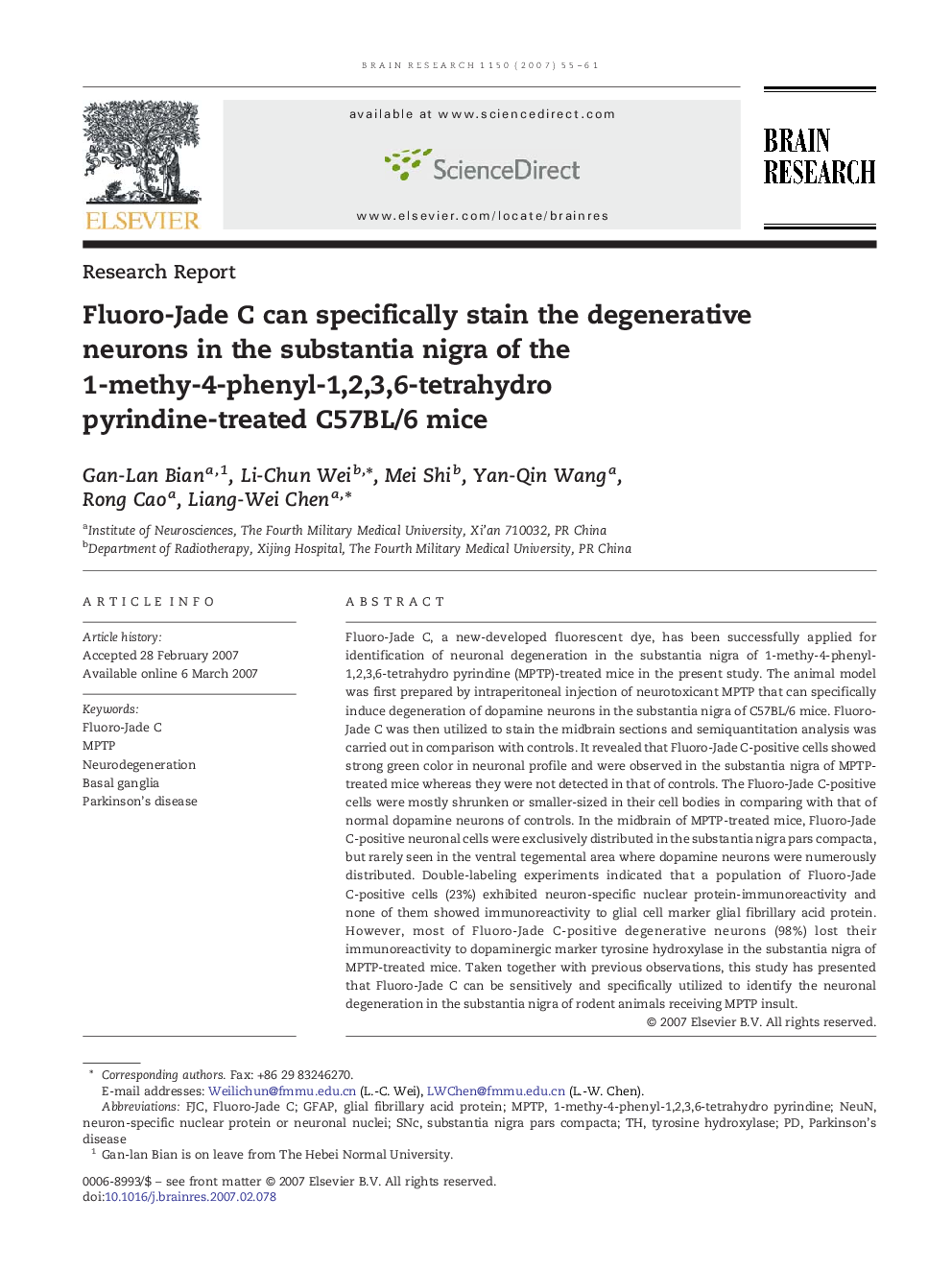| Article ID | Journal | Published Year | Pages | File Type |
|---|---|---|---|---|
| 4331017 | Brain Research | 2007 | 7 Pages |
Fluoro-Jade C, a new-developed fluorescent dye, has been successfully applied for identification of neuronal degeneration in the substantia nigra of 1-methy-4-phenyl-1,2,3,6-tetrahydro pyrindine (MPTP)-treated mice in the present study. The animal model was first prepared by intraperitoneal injection of neurotoxicant MPTP that can specifically induce degeneration of dopamine neurons in the substantia nigra of C57BL/6 mice. Fluoro-Jade C was then utilized to stain the midbrain sections and semiquantitation analysis was carried out in comparison with controls. It revealed that Fluoro-Jade C-positive cells showed strong green color in neuronal profile and were observed in the substantia nigra of MPTP-treated mice whereas they were not detected in that of controls. The Fluoro-Jade C-positive cells were mostly shrunken or smaller-sized in their cell bodies in comparing with that of normal dopamine neurons of controls. In the midbrain of MPTP-treated mice, Fluoro-Jade C-positive neuronal cells were exclusively distributed in the substantia nigra pars compacta, but rarely seen in the ventral tegemental area where dopamine neurons were numerously distributed. Double-labeling experiments indicated that a population of Fluoro-Jade C-positive cells (23%) exhibited neuron-specific nuclear protein-immunoreactivity and none of them showed immunoreactivity to glial cell marker glial fibrillary acid protein. However, most of Fluoro-Jade C-positive degenerative neurons (98%) lost their immunoreactivity to dopaminergic marker tyrosine hydroxylase in the substantia nigra of MPTP-treated mice. Taken together with previous observations, this study has presented that Fluoro-Jade C can be sensitively and specifically utilized to identify the neuronal degeneration in the substantia nigra of rodent animals receiving MPTP insult.
